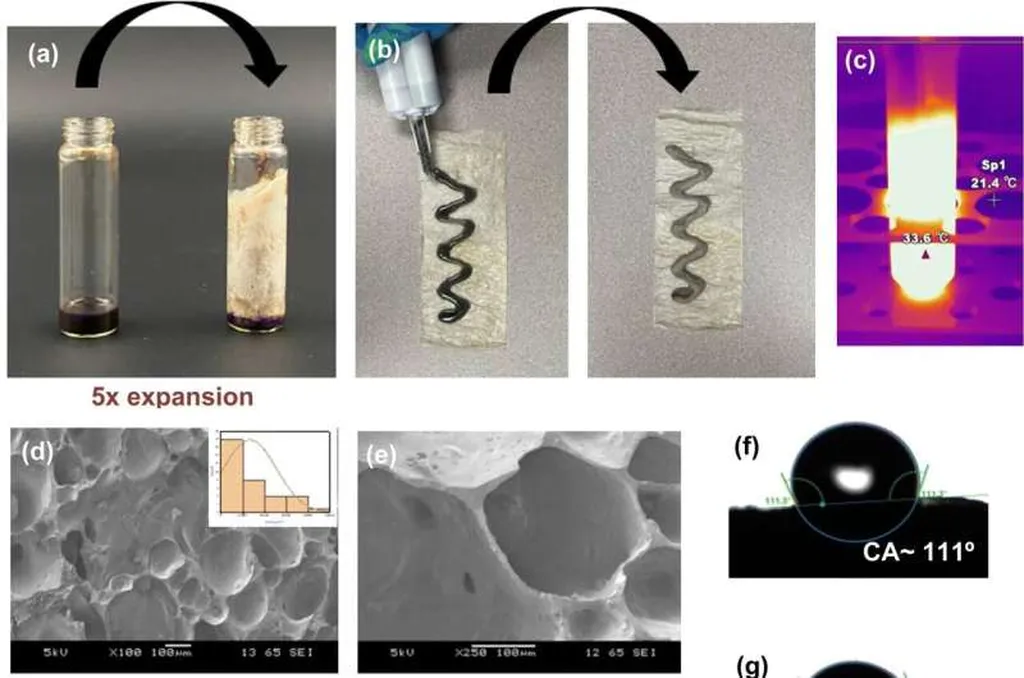In the relentless pursuit of innovative solutions to control severe bleeding, a team of researchers led by Fujin Zhou at Northwest University in Xi’an, China, has made a groundbreaking advancement. Inspired by the natural process of blood clotting, they have developed a bioinspired quaternized chitosan nanofiber sponge that could revolutionize first aid and battlefield medicine.
The novel sponge mimics the structure and function of fibrin networks in blood clots, featuring a unique gradient pore structure. “The outer surface has small pores that effectively capture blood cells, while the inner part has large pores that absorb blood plasma,” explains Zhou. This dual functionality enables the sponge to stop bleeding rapidly, even in deep, non-compressible wounds.
The sponge’s performance is impressive. In tests on rat liver injuries, it achieved hemostasis 2.5 times faster than commercial gelatin hemostatic sponges. In a lethal arterial hemorrhage model using rabbits, the sponge stopped bleeding in just 61.6 seconds, while commercial products failed to do so even after 240 seconds.
The potential applications of this technology are vast, particularly in pre-hospital and battlefield settings. “This bioinspired nanofiber sponge derived from the physiological coagulation process may hold great potential for first aid,” says Zhou. The sponge’s ability to control severe bleeding quickly and efficiently could significantly improve survival rates in emergency situations.
The research, published in the journal Biomaterials and Medical Applications (BMEMat), opens up new avenues for developing advanced hemostatic materials. As the energy sector increasingly operates in remote and hazardous environments, the demand for effective bleeding control solutions grows. This innovation could be a game-changer, providing a reliable tool for managing severe injuries in the field.
The study’s findings highlight the importance of bioinspired design in developing medical technologies. By drawing inspiration from natural processes, researchers can create solutions that are not only effective but also safe and biocompatible. This approach could pave the way for future advancements in wound care and other areas of medicine.
As the energy sector continues to push boundaries, the need for robust and innovative safety measures becomes ever more critical. The bioinspired nanofiber sponge represents a significant step forward in this regard, offering a promising solution for controlling severe bleeding in challenging environments. With further development and testing, this technology could become a standard tool in the medical and industrial safety toolkit.

